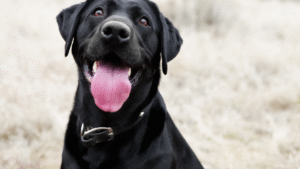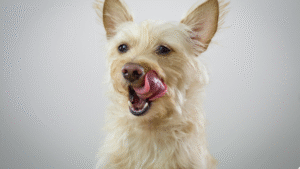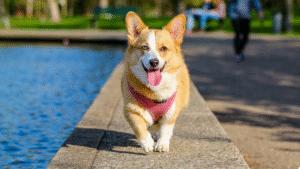Your dog’s recall (coming when called) is one of the most useful commands you can teach. It can be a lifesaving skill, keeping your dog from running into traffic or getting lost. However, one of the most common complaints among dog owners is that their dog won’t come when called—even with treats or after consistent recall training.
Don’t worry if your dog doesn’t come when called—you’re in good company. In fact, most dogs require a certain amount of structured, consistent, and positive recall training to be successful.

Why Dogs Ignore the Recall Command
Before we can fix a behavior, it’s important to understand why a dog is doing what they’re doing. A dog doesn’t ignore you because they’re stubborn, disobedient, or defiant. Their actions (or lack thereof) are based on motivation, environment, and past learning experiences.
Below are the most common reasons dogs ignore a recall:
1. The environment is more rewarding than you are.
If your dog is playing with another dog or chasing a squirrel, those activities are extremely rewarding. Your simple “come” command can’t compete with that level of excitement—unless you’ve trained your recall to be equally rewarding.
2. The recall word has lost meaning.
If you’ve repeated “come” over and over without your dog responding, your dog may have learned that the word doesn’t mean anything. Dogs learn through association, so if “come” hasn’t been consistently followed by reinforcement, it becomes meaningless.
3. You’ve accidentally punished the recall response.
If your dog comes to you and is immediately leashed up and sent home, they’ll associate coming to you with the end of fun. This unintentional punishment can create a negative association with your recall command.
4. Training hasn’t been proofed around distractions.
Owners often teach recall in the living room, where the dog always listens. But then they wonder why the dog doesn’t respond at the park. Dogs need gradual exposure to new environments and distractions in order to generalize the recall command effectively.
5. Lack of consistent reinforcement.
If you only reward your dog occasionally—or not at all—for coming when called, your dog might not think it’s worth the effort.

Step-by-Step: How to Correct a Dog That Ignores Recall
In dog training, “correction” doesn’t mean yelling, punishment, or dominance. Correcting a behavior means helping the dog learn the appropriate response through clear communication, motivation, and practice.
Here are the basic steps to rebuild a strong and reliable recall response:
Step 1: Reset Your Recall Word
If your recall cue (commonly “come” or “here”) has lost its meaning, it’s time to start fresh. Choose a new word that you’ll use only for recall—something distinct like “here,” “come now,” or even a whistle.
Resetting your recall cue helps break the old association and allows you to start from scratch with a clean slate.
Step 2: Start Indoors or in a Low-Distraction Area
Begin your training indoors or in your backyard—somewhere quiet and free of distractions. If you’re outdoors, use a long line (a 15–30-foot leash). Say your recall cue once, and when your dog comes to you, mark the behavior and reward with a high-value treat. These should be special treats your dog doesn’t get at other times.
If your dog doesn’t come, gently reel them in with the leash, then praise and reward when they reach you. This helps your dog learn that coming to you always leads to something good.
Step 3: Make Coming to You Worth It
Dogs repeat behaviors that get them what they want. If coming to you is fun and rewarding, they’ll happily do it again.
Here are a few tips to make recall fun and motivating:
-
Use high-value treats your dog doesn’t usually get.
-
Offer play rewards such as a quick tug or fetch game.
-
Use praise and petting if your dog enjoys physical affection.
-
Release them back to play after they come to you—this teaches that coming when called doesn’t always end the fun.
Step 4: Gradually Increase Distractions
Once your dog reliably comes when called at home, start practicing in new locations with mild distractions—for example:
-
The backyard
-
Quiet parks
-
Walking trails with few people
Continue using the long line during this phase. As your dog succeeds, increase the difficulty by training in busier areas or around other dogs and people.
Always reward generously when distractions are high. This is how you “proof” your recall for real-world situations.

Step 5: Avoid Negative Associations
Never use your recall cue for something your dog dislikes. Avoid calling your dog for:
-
Bath time
-
Nail trimming
-
Ending playtime
-
Scolding or punishment
Instead, go to your dog when you need to do those things. Your recall cue should always predict something positive. This keeps your dog’s trust strong and their motivation high.
Step 6: Use Games to Strengthen Recall
Incorporating games into your recall training keeps it engaging and fun. Here are a few effective ones:
-
Recall Chase Game: Call your dog, then run in the opposite direction. Reward when they catch you.
-
Hide and Seek: Hide behind a tree or furniture and call your dog. Reward enthusiastically when they find you.
-
Two-Person Recall: Have two people call the dog back and forth, rewarding each successful recall. This builds speed and excitement.
Games make training more enjoyable and strengthen your bond with your dog.

Step 7: Gradual Off-Leash Freedom
Do not give your dog full off-leash freedom until their recall is solid in controlled environments. Use a long line for safety during training. Once your dog consistently responds in a fenced area or on a long line with distractions, you can begin practicing off-leash in secure, enclosed spaces.
For long-term reliability, continue rewarding recall throughout your dog’s life. Even after they “know it,” reward them on an unpredictable schedule. Dogs are more motivated when rewards are possible but not guaranteed—much like a slot machine effect.
Related:5 Steps To Have Your Dog Come To You Every Time You Call
Common Mistakes to Avoid in Recall Training
Here are some common mistakes that can weaken your dog’s recall:
-
Repeating the cue: Saying “come, come, come” teaches your dog that the first command doesn’t matter. Say it once, and wait.
-
Chasing your dog: Running after your dog turns recall into a game of keep-away. Instead, move away so they’ll follow you.
-
Training too long: Short, frequent sessions (5–10 minutes) are more effective than long ones.
-
Using low-value rewards: Dry kibble won’t motivate most dogs in distracting environments. Use irresistible treats.
-
Being inconsistent: Consistency is the foundation of any reliable behavior. Always reward good recalls and avoid reinforcing noncompliance.
When to Seek Professional Help
If your dog continues to ignore recall despite consistent practice, consider consulting a professional dog trainer or behaviorist. They can assess your training methods, timing, body language, and reward strategy.
Dogs with high energy, anxiety, or reactivity may benefit from personalized training plans and structured socialization. Look for trainers who use positive reinforcement methods and avoid punishment-based techniques. Harsh corrections can damage your dog’s trust and make them less likely to come when called.
Final Thoughts
Correcting a dog that ignores recall isn’t about dominance, control, or punishment—it’s about communication, consistency, and trust. Your dog needs to know that coming when called always leads to good things, never to punishment or disappointment.
Start small, reward generously, and be patient. With time and consistency, your dog will learn that “come” means excitement, safety, and love. Whether you’re calling them from across the park or across the living room, a reliable recall is one of the greatest gifts you can give your dog—and yourself.
- 5 Cheap Alternatives To Dog Training Equipment - November 12, 2025
- Homemade Calming Spray To Help Dogs During Training - November 12, 2025
- 7 DIY Dog Training Tools You Can Make From Household Items - November 12, 2025
